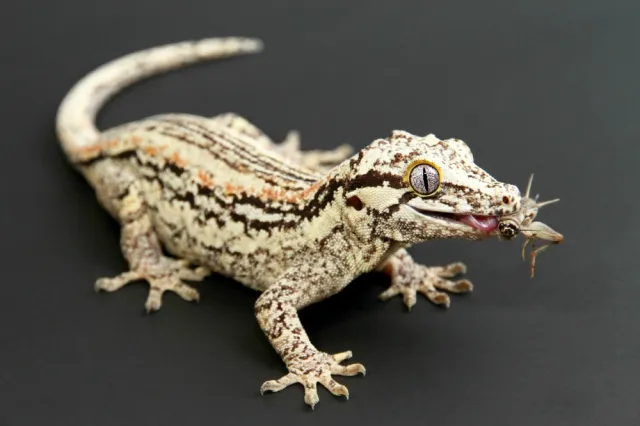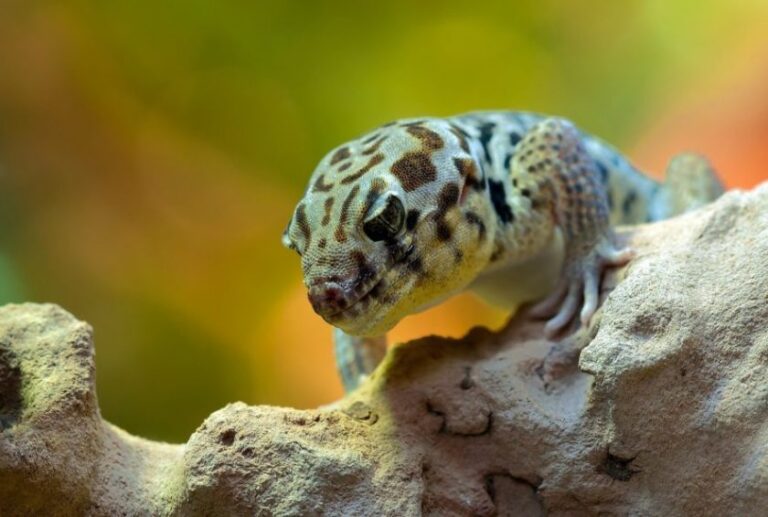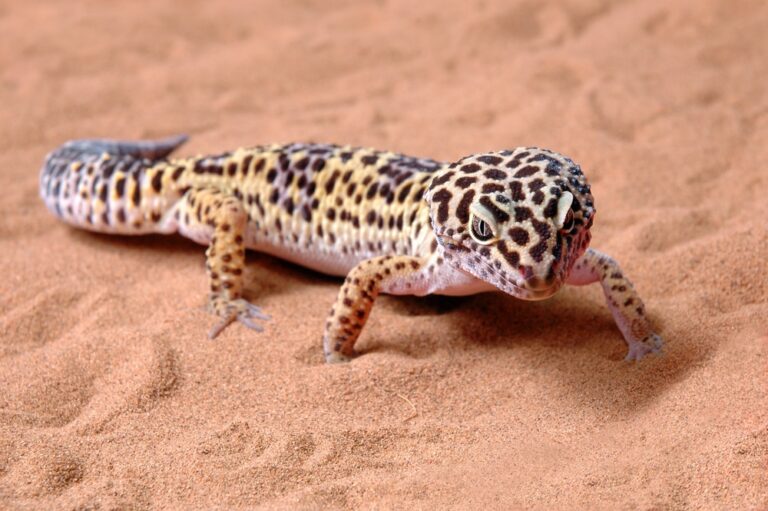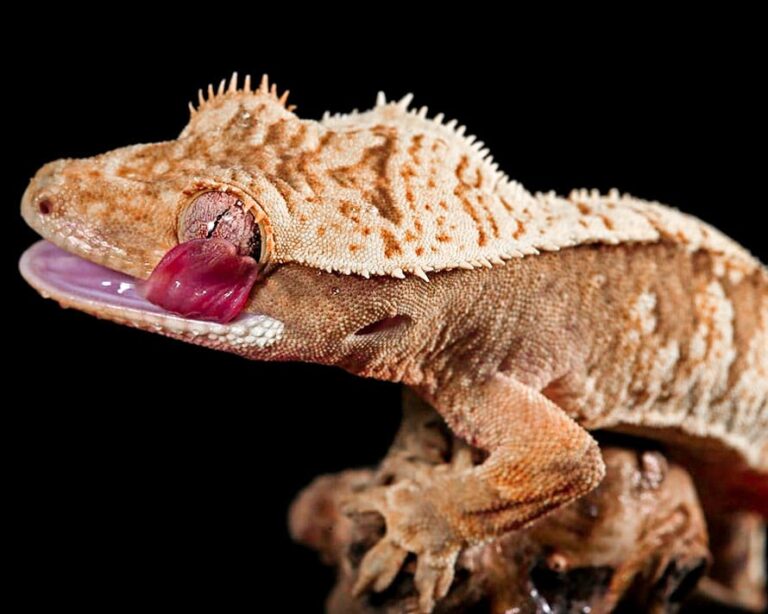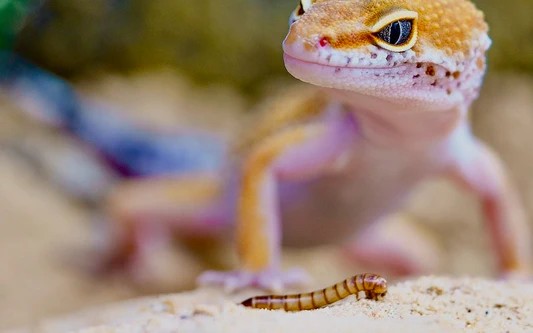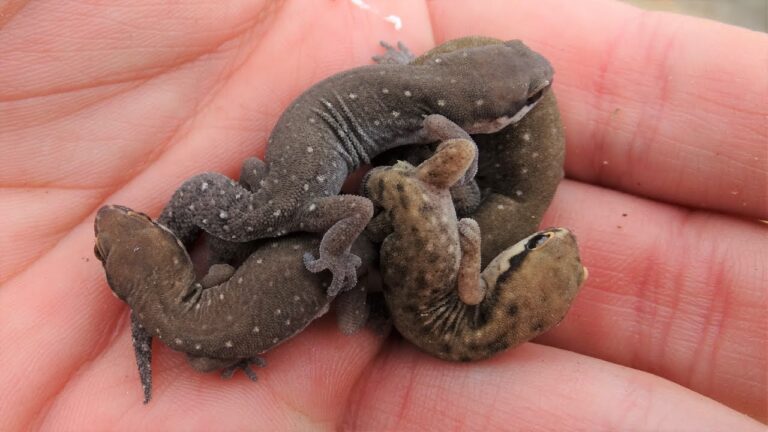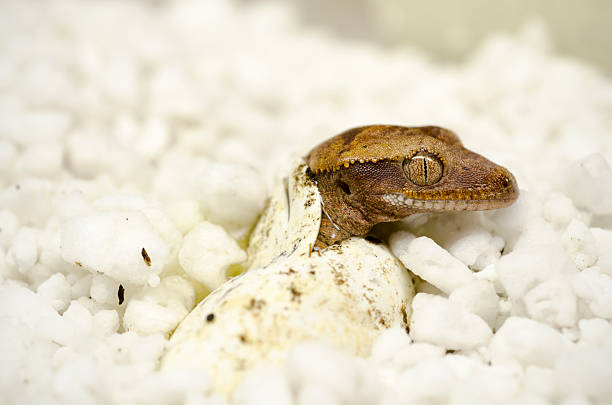What Do Gargoyle Geckos Eat? Feeding Habits
As I delved into the captivating realm of reptile keeping, one creature, in particular, caught my eye – the mesmerizing Gargoyle Gecko. With their enchanting appearance and charming demeanor, these small, arboreal lizards quickly became my favorite companions.
However, one of the questions that continually piqued my curiosity was, “What do Gargoyle Geckos eat?” Unveiling the dietary secrets of these enigmatic beings became a quest that led me into a world of discovery and fascination.
Indeed, while Gargoyle Geckos’ diets are sometimes likened to Crested Geckos and fruit-based diets are suggested, they are primarily carnivorous. Their main food sources include insects, arthropods, and occasionally small rodents or geckos.
Join me in exploring the intriguing dietary habits of these gentle geckos, as we uncover the perfect menu to keep them thriving in captivit
Sample Gargoyle Gecko Diet
Age Group | Feeding Frequency | Food Type | Feeder Insects | Fruits |
| Baby & Juvenile | Daily | Powdered Gecko Food Mix (in a cup) | 3-5 insects 2-3 times per week | 1-2 times per week |
| Adult | Every other day | Powdered Gecko Food Mix (in a cup) | 3-5 insects 2-3 times per week | 1-2 times per week |
Optimal Food Sources for Gargoyle Geckos
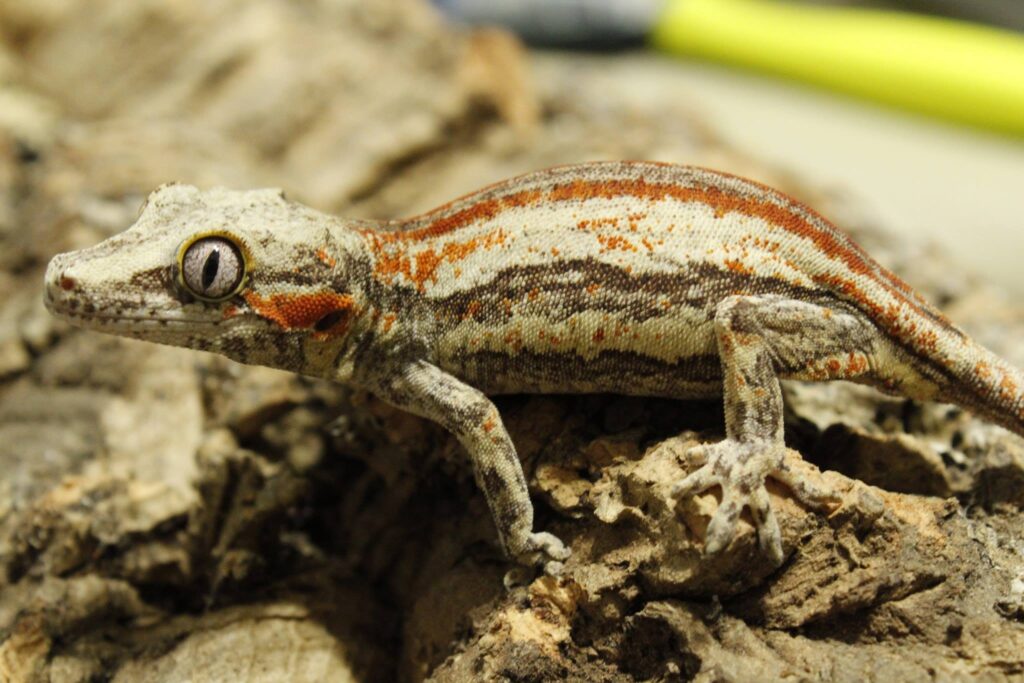
Feeder Insects
Gargoyle Geckos, much like their reptilian counterparts, relish feeder insects as a significant part of their diet. These insects are not only rich in moisture and protein but, with proper dusting, also provide the essential calcium that these geckos require.
However, a crucial point to emphasize is that only store-bought feeder insects should be on the menu. Wild-caught insects carry an inherent risk, as their dietary habits and bacterial load are unpredictable.
- Dubia Roaches
- Discoid Roaches
- Crickets
- Mealworms
- Black Soldier Fly Larvae
These options are all considered “lean” insects, boasting a relatively high protein-to-fat ratio. Conversely, there are more calorically dense alternatives such as small hornworms, silkworms, and waxworms. However, it’s imperative to treat these high-fat options as occasional indulgences since overindulgence can lead to rapid weight gain, which is less than ideal for these geckos’ health.
What are the considerations when it comes to feeder insects?
Gut-Loading: Prior to feeding, ensure that the feeder insects are well-fed with appropriate diets, primarily consisting of vegetables, greens, or specialized gut-loading mixes. This practice guarantees that the insects themselves are nutrient-rich, offering healthy micronutrients and fiber that the it can assimilate.
Calcium Dusting: They have a heightened need for calcium, surpassing what these insects naturally provide. Use either pure calcium powder or a variant enriched with vitamin D to lightly coat these insects just before serving them.
So, simply place the insects in a container, add the recommended amount of powder as indicated on the label, give them a gentle shake, and then introduce them into the gecko’s feeding dish.
Lastly, exercise vigilance to ensure that the size of the prey items you offer is appropriate. Overly large insects can lead to digestive issues, such as impaction, which poses a considerable risk to your gecko’s well-being.
As a rule of thumb, no feeder insect should exceed the width between the reptile’s eyes, which approximates the width of its throat. This precautionary measure helps safeguard against potentially dangerous situations.
Simplified Fruit and Vegetable Diet for Gargoyle Geckos
While they may enjoy fruits and vegetables as treats, it is imperative to maintain a balanced diet. Feeder insects should form the core of their nutrition, with fruits serving as supplementary components. Opt for fruits with higher calcium content, such as figs, dates, mangoes, apricots, papayas, or berries, which can also be offered in dried form.
Also, for the fruit and vegetable part of your Gargoyle Gecko’s diet, I suggest using one of the powdered diet mixes made by brands like Repashy, Exo Terra or ZooMed. There are various options available, such as the Gargoyle Gecko Diet, Crested Gecko Classic, Grubs N Fruit, and Mango Diet, among others. You can feed these powdered diets 3-4 times a week in addition to their live food.
Quick List Feed Insects :
| Feeder Insect | Feeding Frequency | Characteristics |
| Dubia Roaches | 2-3 times per week | High protein-to-fat ratio; commercially bred; staple food source. |
| Discoid Roaches | 2-3 times per week | High protein-to-fat ratio; commercially bred; staple food source. |
| Crickets | 2-3 times per week | High protein content; safe to feed; potential noise issue. |
| Mealworms | After shedding | Soft and light after shedding; hard chitin shells become less digestible over time; feed less regularly. |
| Black Soldier Fly Larvae | Regular feeding option | Similar to mealworms but with a slightly better nutritional profile. |
| Small Hornworms | Occasional treat | High fat content; feed while small; useful for nurturing underweight geckos. |
| Silkworms | Suitable but challenging | Can be fed; hassle to buy and keep; can be offered even after becoming silk moths; provides hunting stimulation. |
| Waxworms | Rarely | High in fat and low in other nutrients; should be fed sparingly; safe to eat even after becoming moths. |
Dietary Caution: Foods to Avoid for Gargoyle Geckos
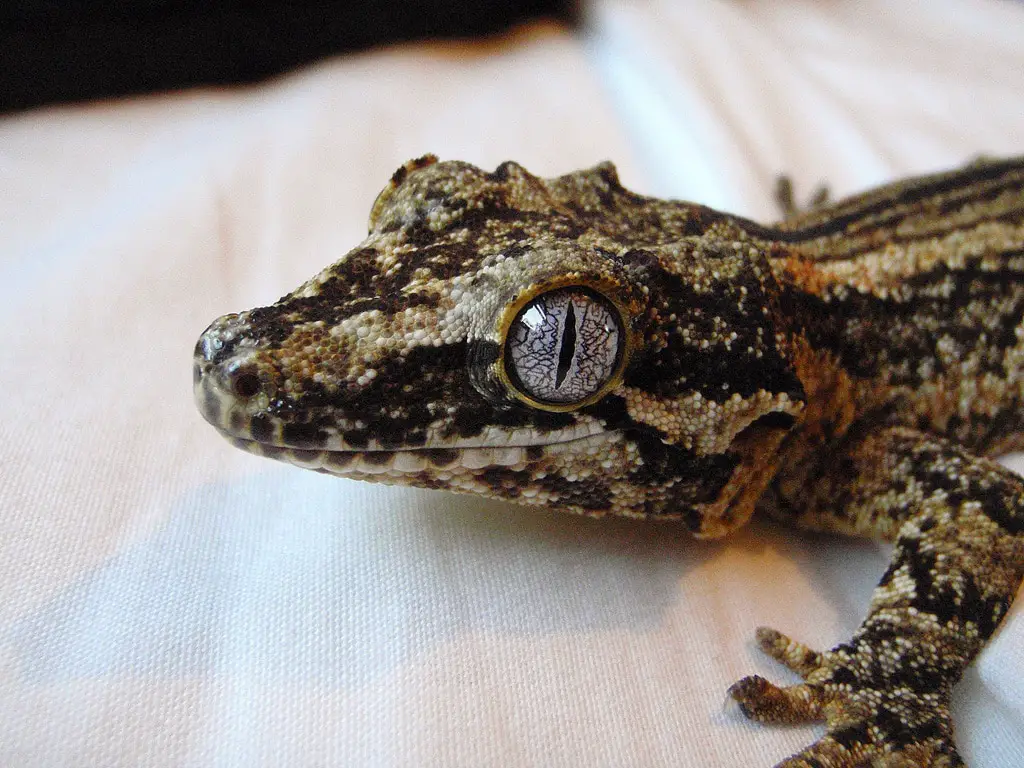
Insects:
Avoid Wild Insects: It’s crucial to steer clear of wild-caught insects. While it may seem like a natural choice, as they can pose significant health risks to your gecko. Unlike their counterparts in New Caledonia, they may be exposed to pesticides and toxins, making them less suitable for your pet.
Stick to Common Feeder Insects: Opt for well-known feeder insects that are recognized for providing the right balance of nutrients without posing safety or health concerns.
Exercise Caution with High-Fat Insects: While some high-fat feeder insects are safe, they should be fed sparingly. Overindulging in these insects can lead to excessive weight gain, which is not ideal for health.
Fruit:
High-Oxalate Fruits: Fruits high in oxalate, such as starfruit and rhubarb, should be omitted from your gecko’s diet. These fruits can have potentially fatal consequences for your pet.
Avocado: It contains a substance called persin, which is toxic to birds and should also be avoided when feeding reptiles like them.
Citrus Fruits: Although seemingly harmless, they tend to avoid citrus fruits. It’s best to refrain from offering any citrus fruits to your gecko.
FAQs
Do Gargoyle Geckos need a water dish?
– Yes, they require a water dish for hydration.
How often do Gargoyle Geckos poop?
– They typically poop several times a week.
How long can Gargoyle Geckos go without food?
– They can go without food for 1-2 weeks, but it’s not recommended.
Do gargoyle geckos eat fruit?
Yes, but it should be limited in their diet.
Do gargoyle geckos eat every day?
– No, they usually eat every 2-3 days.
Do gargoyle geckos like water?
– Yes, they need access to water for drinking.
Do gargoyle geckos bite?
– Occasionally, but it’s rare and usually not aggressive.
Final Words
In conclusion, I’ve learned that Gargoyle Geckos have specific dietary requirements crucial for their health and well-being. These fascinating reptiles thrive on a balanced diet that consists of feeder insects and fruits.
Further, it’s essential to provide a variety of nutritionally rich foods while taking into account the gecko’s age and individual preferences. Additionally, proper supplementation with calcium and vitamins is vital to enhance their diet.
I’ve come to understand that they are unique creatures, and their dietary needs can vary. Regularly observing and adjusting their diet is critical to ensure their vitality and longevity.
By offering a diverse menu that includes suitable feeder insects, fruits, and supplements, I can provide these captivating geckos with the nutrition they need for a happy and healthy life in captivity. I’ll always make it a point to consult with a reptile veterinarian or rely on reputable sources for personalized advice on it care and nutrition.

